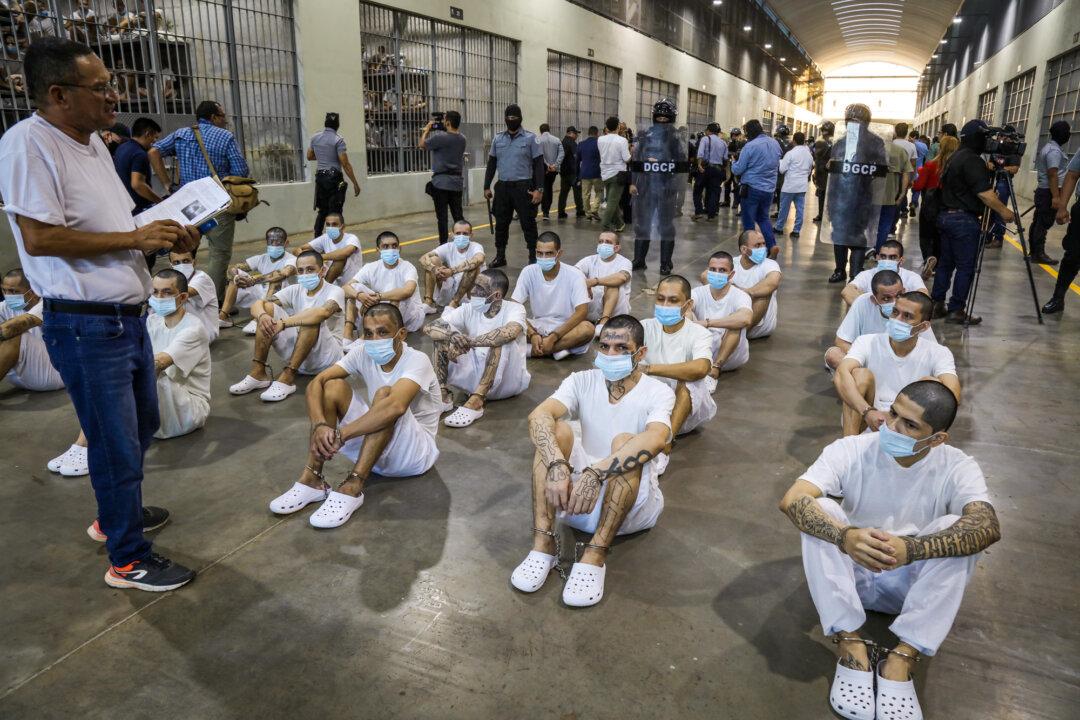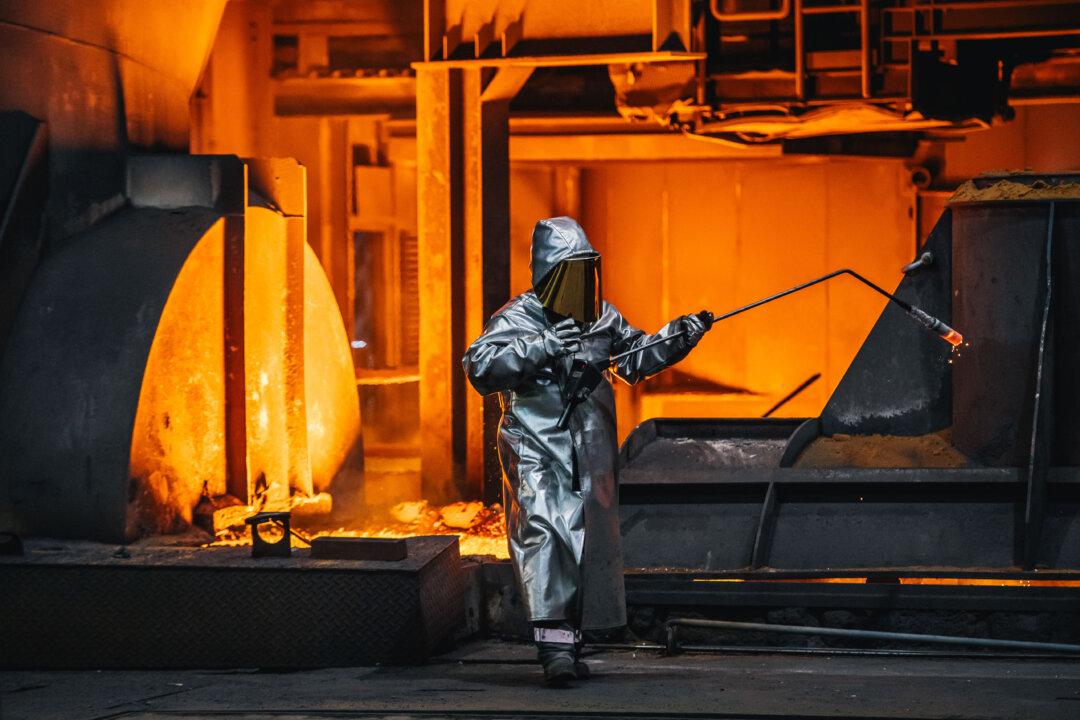Breaking
Johnson Pulls Vote on Trump-Backed Budget Plan Over Holdouts
Some House Republicans still have objections to a revised budget blueprint to unlock Trump’s agenda over fiscal concerns.
How Trump’s 125 Percent Tariffs Are Dismantling China’s Unfair Trade Regime: Christopher Balding
After Beijing retaliated to U.S. tariffs, Trump has now announced a tariff hike to 125 percent on Chinese products.
Trump Hikes Tariffs on China to 125 Percent After Beijing Opts to Play Hardball
President Donald Trump is hiking tariffs on China to 125 percent after Beijing opted to play hardball. Meanwhile, other countries are getting a 90-day pause.

The Importance of Myth and Why We Should Understand It
Myth is not the opposite of truth; it’s a way of getting at deeper truths.

Cherishing Judaica: Jewish Objects Around Boston
The ‘Intentional Beauty’ of Jewish craftsmanship is in an exhibition at the Museum of Fine Arts, Boston.

Back Story Gone Awry: Dickens’s Fagin Gets a New Treatment
Allison Epstein wastes her talent in ‘Fagin The Thief,’ trying to right literary wrongs by revising a serial child exploiter.
Most Read
Top Stories
▶How Trump’s 125 Percent Tariffs Are Dismantling China’s Unfair Trade Regime: Christopher Balding
After Beijing retaliated to U.S. tariffs, Trump has now announced a tariff hike to 125 percent on Chinese products.
Trump Announces 90-Day Pause on Reciprocal Tariffs, Raises Levy on China
China will now face a 125 percent tariff, the president announced.
US Stock Indexes Skyrocket Following Trump’s Tariff Pause
The Dow soared by nearly 3,000 points, while the Nasdaq went up by 12.1 percent.
How Chinese Imports Are Leveraged in Cyberattacks
Chinese-made devices have been repeatedly exploited as part of a Beijing-backed effort to undermine and destabilize the United States.
In El Salvador, Locals Proud of Efforts to Lock Up Gangs—Including for US
After decades of civil war and gang violence, many citizens are glad their country is finally being recognized for its tough stance on gangs and crime.
Walmart Frames Tariffs as Opportunity, Commits to Low Prices
The retail giant said tariffs were opportunity to gain market share while emphasizing its business strategy. Its shares closed up nearly 10 percent.
Trump’s NASA Nominee Committed to US Beating CCP to Moon
‘Space is the ultimate high ground,’ Jared Isaacman said. ‘We cannot afford to cede that ground.’
House Passes Bill to Curb Judges’ Nationwide Injunctions
The measure would prevent federal district court judges from stalling the president’s agenda with sweeping orders.
US Spy Chief Gabbard Starts Task Force to Investigate Intelligence Community
Her statement said the group will also work in concert with the Department of Government Efficiency.
Trump Signs Orders to Boost Arms Procurement and Shipbuilding, Streamline Arms Sales
The president directs the Pentagon to boost both private and public investment in the shipbuilding industry.
New Wave of Trump’s Deregulation Eases Rules on Shower Heads, Plastic Straws, and More
The president’s actions also target Biden-era limits on gas stoves, water heaters, washing machines, furnaces, and dishwashers.
Tracking Trump’s High Level Appointments, Senate Confirmations
The Senate is undertaking the confirmation process for the president’s new administration.
Art Critic Loves Shen Yun
Art critic Karen Sulcan came to see Shen Yun Performing Arts on April 8 and was pleased to share that she loved it.
FBI Investigates Vandalism of Tesla Charging Station in Washington State
The incident comes amid a growing wave of vandalism and targeted attacks against the electric vehicle brand.
Noem Relaunches Victims of Immigration Crime Engagement Office
Homeland Security secretary said Trump would prioritize help for families of victims of crimes committed by illegal immigrants.
House Republicans Block Democratic Bid to Force Vote on Tariffs
The president has paused new tariffs on dozens of countries for 90 days and raised levies on Chinese goods to 125 percent.
2 Judges Limit Trump’s Deportations Under Wartime Law
New lawsuits were filed in Texas and New York after the Supreme Court removed blocks in Washington.
A New Food Pyramid for a Metabolically Unwell Nation
For the first time, experts are plugging a low-carb food pyramid.
Supreme Court Pauses Orders Forcing Trump Admin to Rehire Labor Board Members
Biden appointees Gwynne Wilcox of National Labor Relations Board and Cathy Harris of Merit Systems Protection Board were fired soon after Trump took office.
Day in Photos: US Coast Guard, Heat in India, and Harvesting Damask Roses
A look into the world through the lens of photography.
DHS to Screen Immigrant Applicants’ Social Media for Anti-Semitism, Terrorist Ties
Under the new policy, which kicks in immediately, online expressions of anti-Semitism will be grounds for denying immigration benefit requests.
250 Years Ago, Part 4: The Salem Gunpowder Raid and Leslie’s Retreat
On the road to the Revolutionary War, defiant Patriots give the British a prelude of battles to come.
Special Coverage
Special Coverage































































![[LIVE Q&A 04/10 at 10:30AM ET] As Trump Pauses Tariffs, Focus Shifts to Global Trade War With CCP | Live With Josh](https://www.theepochtimes.com/_next/image?url=https%3A%2F%2Fimg.theepochtimes.com%2Fassets%2Fuploads%2F2025%2F04%2F09%2Fid5839441-041025_REC-600x338.jpg&w=1200&q=75)















![[PREMIERING NOW] How a High School Teacher Built One of the Greatest Tennis Program in America](https://www.theepochtimes.com/_next/image?url=https%3A%2F%2Fimg.theepochtimes.com%2Fassets%2Fuploads%2F2025%2F04%2F09%2Fid5839202-The-Coach-Behind-McEnroe_thumbnail_04072025-600x338.jpg&w=1200&q=75)






























